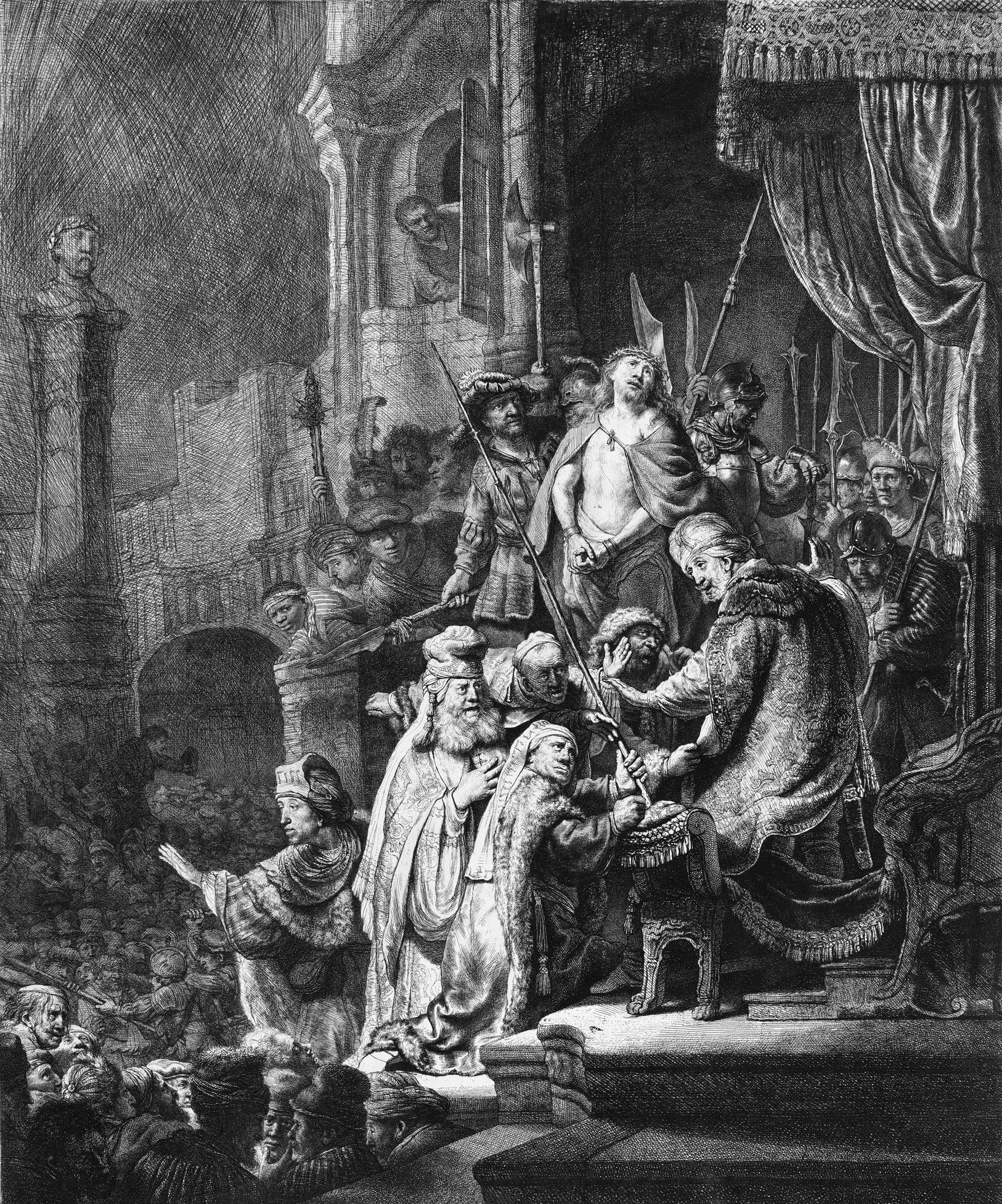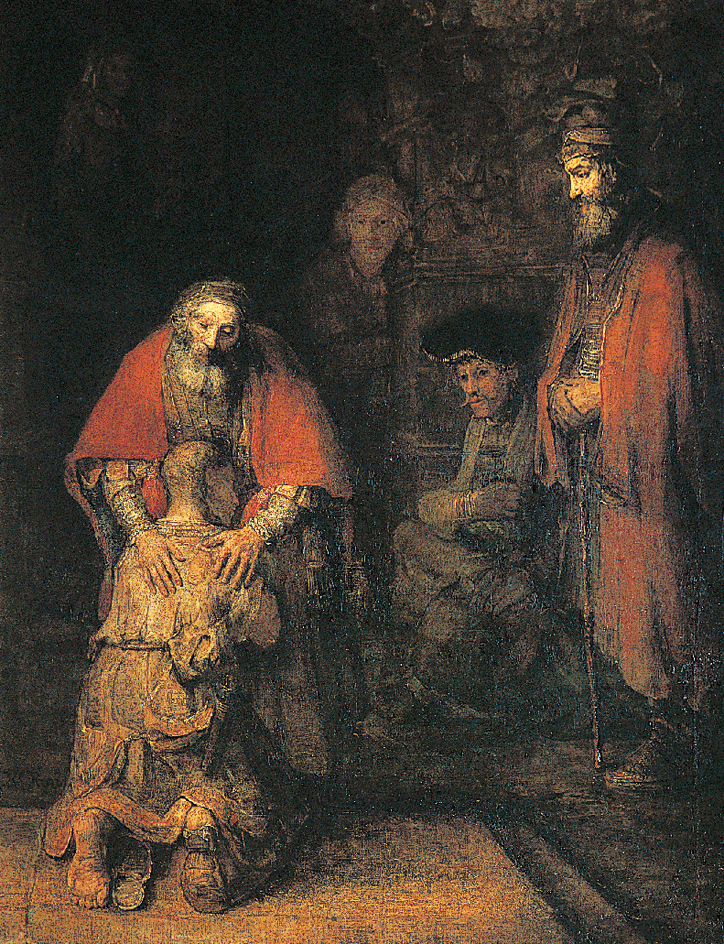Rembrandt, << REHM brant >> (1606-1669), was the Netherlands’ greatest artist. Rembrandt’s output of works of art was tremendous. Some scholars credit him with about 600 paintings, 300 etchings, and 1,400 drawings, though several of his paintings are now attributed to his students. Many other works have been lost. Unlike some other great artists, Rembrandt wrote almost nothing about his art.
The range of Rembrandt’s subjects is extraordinary. His works depict stories inspired by the Bible, history, and mythology. He also painted portraits, landscapes, nudes, and scenes of everyday life. Throughout his career, Rembrandt also made about 100 known self-portraits, in which he portrayed himself in various roles and contexts.

Rembrandt’s reputation rests on his power as a storyteller, his warm sympathy, and his ability to show the innermost feelings of the people he portrayed. His use of light and shadow and warm colors creates an atmosphere that enables us to share his profound understanding of the individual’s inner life. Few artists match his genius for showing the human aspect of Biblical characters, which he conveys through moving facial expressions and gestures.

Early years.
Rembrandt was born in Leiden on July 15, 1606. His full name was Rembrandt Harmenszoon van Rijn. Rembrandt first studied art with an obscure Leiden painter from about 1621 to 1624. Then he studied with the Dutch artist Pieter Lastman in Amsterdam. About 1625, Rembrandt returned to Leiden to paint on his own.
Leiden years: 1625-1631.
Most of Rembrandt’s early works are small, precisely finished pictures of Biblical and historical subjects. The influence of Lastman can be seen in the lively gestures and expressions of his figures and in his vivid colors and glossy paint. It can also be seen in his often crowded compositions and in his frequent use of less well known Biblical or historical subjects. However, Rembrandt rapidly surpassed his teacher’s ability to tell a story. He used light and shadow to heighten the drama of his works.
Rembrandt quickly achieved local success. He began to teach in 1628, and his strong personality continued to attract students and followers throughout his career.
Early Amsterdam years: 1632-1640.
About 1632, Rembrandt moved to Amsterdam, where he painted portraits of wealthy middle-class patrons. He remained there for the rest of his life, except for a few short trips within the Netherlands. In 1634, he married Saskia van Uylenburgh. They had four children, but only one, Titus (1641-1668), survived infancy.
In 1632, Rembrandt painted the Anatomy Lesson of Professor Tulp. The painting was a group portrait of eight men that showed a sense of integrated activity at the same time he portrayed each person as an individual. The painting immediately established Rembrandt’s reputation as the most fashionable portrait painter in Amsterdam. Rembrandt became wealthy and eagerly collected works of art. In 1639, he bought a large, heavily mortgaged house.

Rembrandt’s paintings Blinding of Samson, Danae, and Rape of Ganymede show the exciting subjects he favored during these years. They, like most of his other works during this period, emphasize dramatic movement, emphatic gestures, sharp contrasts of light and shadow, and striking color accents.
The last years: 1640-1669.
Rembrandt’s most famous picture, The Night Watch, was painted in 1642. The painting represents a civic militia group of Amsterdam preparing to march. Such guards had only a social function in the 1600’s, but Rembrandt brilliantly captured a sense of their original active and heroic role from an earlier time. Rembrandt received a high price for The Night Watch, and he continued to receive important public and private commissions during the last years of his life.

However, tragedy did strike Rembrandt in 1642 when his beloved wife, Saskia, died. Also, the mature Rembrandt did not enjoy the wide popularity he had as a young painter. Although he still ranked as one of his country’s leading artists, he ran short of money. The house he purchased in 1639 was too expensive. Rembrandt also collected works of art on a scale he could not afford. Most important, he began to paint more and more for himself. His late majestic Biblical paintings were not commissioned works. An example of these works, Jacob Blessing the Sons of Joseph, was painted in 1656.
During this period, Rembrandt’s art gained steadily in spiritual depth and pictorial richness. His wonderful light now seemed to glow from within his works. The shadows became more intense and vibrant. Rembrandt reduced his palette to warm colors, such as browns, reds, and oranges, and applied paint thickly to create texture. In place of earlier sensational effects, his work shows solemn restraint, calmness, and tenderness. When humanity is represented, the thoughtful rather than active side of human nature is stressed. The Return of the Prodigal Son is an example from this period.

Rembrandt was forced to declare bankruptcy in 1656. His house and possessions were sold at auction in 1657 and 1658. But when he died on Oct. 4, 1669, he left his surviving relatives a fairly large inheritance.
